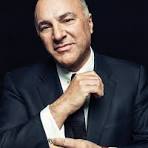
THIS IS NOT FINANCIAL ADVICE. FOR FINANCIAL ADVICE SEE A FINANCIAL ADVISOR
Kevin O’Leary recently claimed that people can live comfortably on just $500,000 in investments and “do nothing else to make money.” But is this advice practical for most Americans planning their retirement?
O’Leary’s Investment Recommendations
The famous entrepreneur shared his thoughts in a video on his YouTube channel. He warned viewers to avoid risky ventures like family restaurants, bowling alleys, or bars. “You’ll lose your money,” he stated plainly.
Instead, O’Leary suggests strategic investing of that $500,000 sum to generate sustainable income.
Return Expectations
According to O’Leary, investors can achieve 5% returns in fixed income securities with “very little risk.” He suggests potentially higher returns between 8.5% and 9% for those willing to include equities and tolerate market volatility.
These return estimates align with current market conditions. 10-year U.S. Treasury bonds currently yield approximately 4.55%. The S&P 500 has delivered average annual returns around 11% over four decades when dividends are reinvested.
The Reality of Retirement Numbers
Income Shortfall
The income generated from O’Leary’s suggested investments falls short of most retirement needs. At a 4.5% yield, $500,000 produces just $22,500 in annual income.
This amount quickly depletes when facing essential expenses. Studies by RBC Wealth Management show that about 25% of retirement income typically covers medical expenses alone as retirees age.
Even with O’Leary’s optimistic 9% return scenario, the annual income would be less than $50,000 before taxes.
What Americans Actually Need
O’Leary’s suggestion drastically differs from what most Americans believe they need. The latest Northwestern Mutual study reports U.S. adults target an average of $1.46 million for comfortable retirement — nearly triple O’Leary’s suggested amount.
Better Retirement Planning Approaches
The 4% Rule
Most financial advisors recommend the “4% rule” as a more realistic guideline. Financial adviser Bill Bengen developed this approach, which allows retirees to withdraw 4% from retirement funds annually over 30 years.
This withdrawal rate adjusts for inflation after the first year. The strategy prevents retirees from outliving their savings while providing adequate income.
Finding Balance
O’Leary offers solid advice about avoiding risky ventures. However, his claim that $500,000 can support comfortable living doesn’t match current economic realities.
Smart investment strategies matter greatly. But most Americans need a significantly larger nest egg than $500,000 to secure their retirement future.
Key Takeaways
While investing wisely remains important, retirement planning requires realistic financial goals. Most Americans should aim for retirement savings well above the $500,000 mark suggested by O’Leary.
Proper planning means considering healthcare costs, inflation, and longer lifespans. These factors demand larger savings to maintain quality of life throughout retirement years.









